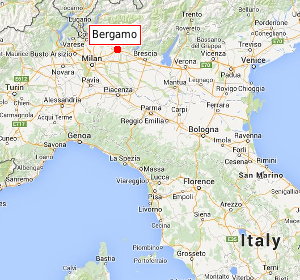Evaluation of renal function and renal risk in the twenty-first century
Travel information
Venue
Clinical Research Center for Rare Diseases “Aldo e Cele Daccò”Mario Negri Institute for Pharmacological Research
Villa Camozzi, via Camozzi, 3 - 24020 Ranica, Bergamo (Italy)
Phone 0039 035 42131
The Clinical Research Center Rare Diseases "Aldo e Cele Daccò" is located at Villa Camozzi at Ranica, 5 km far from Bergamo.
By plane
From Orio al Serio Airport (10 km far from Bergamo), a bus service
is available to Bergamo center. From Milano-Linate Airport (50 km
far from Bergamo) and Milano-Malpensa Airport (120 km far from
Bergamo) is possible to use public transportation to the Central
Station and Milano Cadorna.
By train
Bergamo is one hour trip from Milano (Centrale or Lambrate railway
stations). Check the timetable on the Italian Railways web site at:
http://www.trenitalia.it
By car
The A4 highway (Milano-Venezia) directly connects Bergamo to the major
Italian highway network. Way out Bergamo, at the roundabout get the
second way out, direction Alzano Lombardo. Exit Ranica and proceed
to the center. Follow the indications for Villa Camozzi.
By bus
Take the local line ATB Bus, line 11/A (in the centre of Bergamo, Porta
Nuova) to Ranica. Villa Camozzi is 300 meters away from the bus stop.
Moreover, near the Railway station, Tram delle Valli (TEB) is leaving every 15 minutes and stops in Ranica. The stop is 15 minutes walk from Villa Camozzi.
About the Center
The Clinical Research Center for Rare Diseases “Aldo e Cele Daccò” is located in Ranica (Bergamo) at “Villa Camozzi”, and since 1992 the center is dealing with promoting and treatment of rare diseases. The Villa is entitled to Mr. and Mrs. Aldo and Cele Daccò for their generous donation that allowed the Mario Negri Institute for Pharmacological Research to completely restore Villa Camozzi.The Daccò Center is a unique example of an institution capable of establishing all necessary steps of a clinical research project. To this aim, scientists and professionals like physicians, biologists, bioengineers, nurses, biostatistics, computer technicians, work closely together to evaluate the health status of patients, to monitor and collect the data derived from clinical studies, to elaborate these information to ultimately determine the efficacy of possible new therapeutic strategies.
Bergamo

Bergamo in the web:
